In the electric energy of the city, the passion and the power of love and lust in all its various forms are always present, like a potent current powering the emotional human landscape.
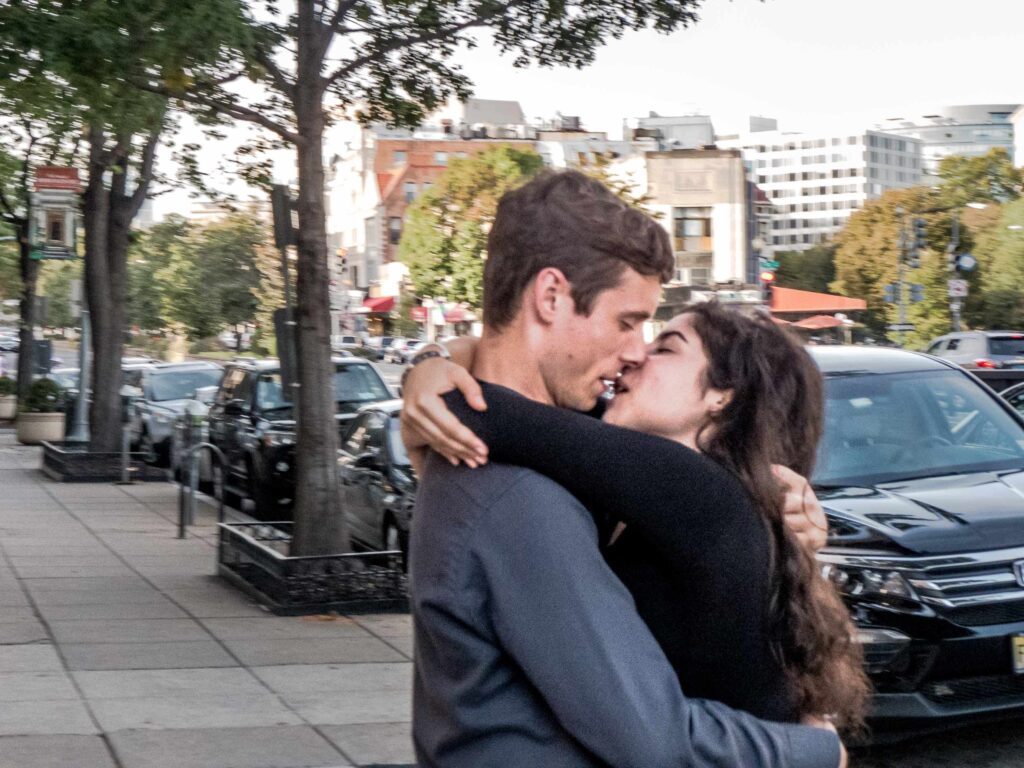
The image above freezes the moment that a couple stands in the street, oblivious to the world around them, with arms wrapped in mutual embrace and eyes shut in abandon, their lips about to lock in a passionate kiss, thereby becoming a singular co-entity of living emotional energy.

A young couple interact intimately with each other, the angle of their legs reflecting the angle of the setting September sun highlighting their faces between vertical lines that further isolate their intimate interaction of love.
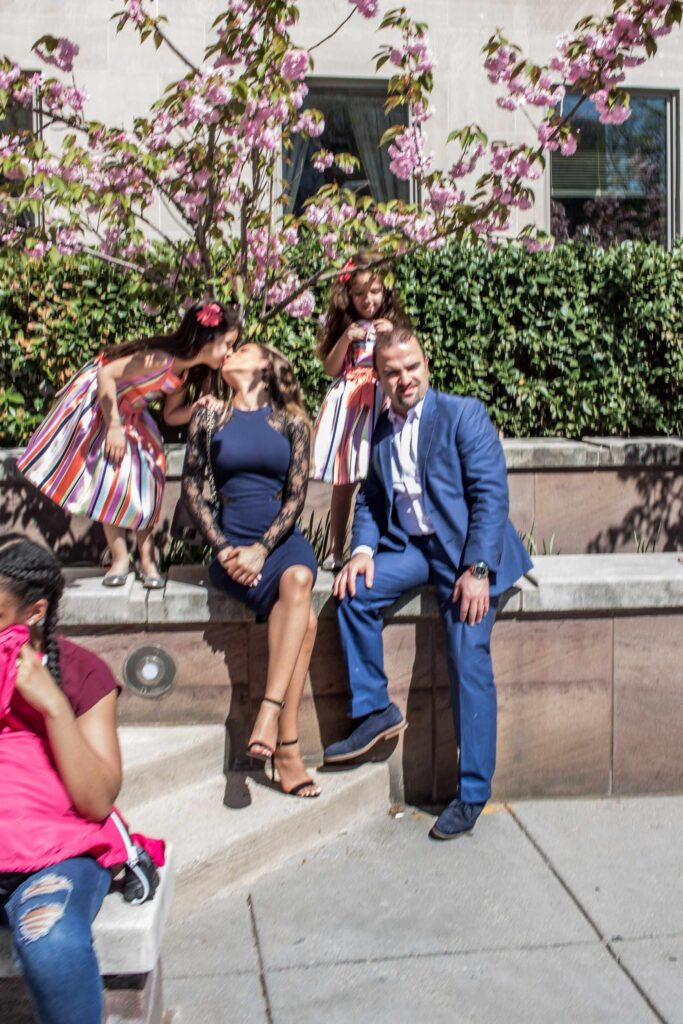
A family dressed in their best sit on a sunny Spring day. One young daughter leans over to kiss her handsome mother with love, the flower-shaped ribbon in the daughter’s hair mirroring the cherry blossoms in bloom above her.
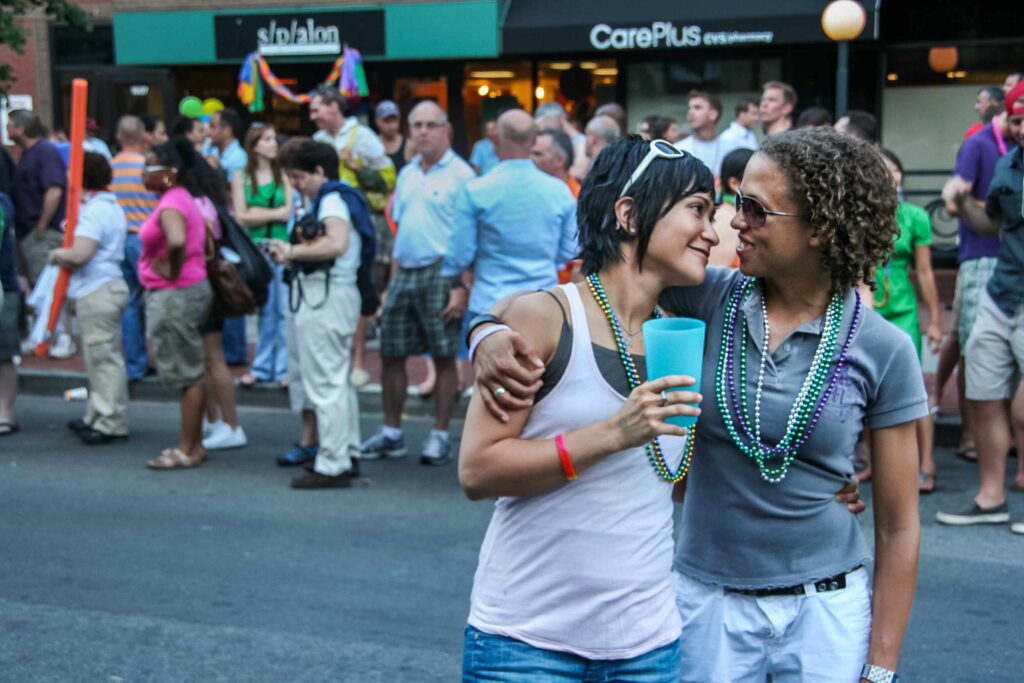
A couple bedecked in beads look smilingly and lovingly into each other’s eyes during DC’s Capitol Pride Parade.

In the loud bustle of the vehicle-laden big city, it is always an endearing sight to see love manifest itself in the form of a bicycle ride.
While waiting for the light to change at an intersection by the executive buildings of the White House, I notice a man peddling towards me on a bike, an smiling attractive young woman sitting on the rack of the bike. They laugh as he struggles mightily to keep up with traffic. In that passing instant, I barely have enough time to turn on the camera around my neck and take a few shots as they ride by me. It is an endearing image of love for sure, his dinosaur-patterned shorts and all. And yet what does the blonde woman walking forward in the distance represent? Does she symbolically represent the past or someone in the future? As much as this image represents an exceedingly warm and endearing image to me, at the same time, there is the faintest hint of something that reminds me that as much as we wish and aspire for love to be a timeless and enduring thing, like all things in life, it is, in fact, a fragile state, subject to unforeseen change and end at any time.

A line of men on bikes stop at a midtown Manhattan street intersection as pedestrians traverse the crosswalk. We do not see the face or front of the young woman before the viewer, but we see and feel the lustful gaze of the men singularly focused on her as she walks across the street, perhaps in a shared fantasy of objectification as the pedestrian walk sign counts down the seconds until the light changes. The identical nature of the men’s rental bikes and shopping bags serve to amplify and emphasize their collective lust and objectification.

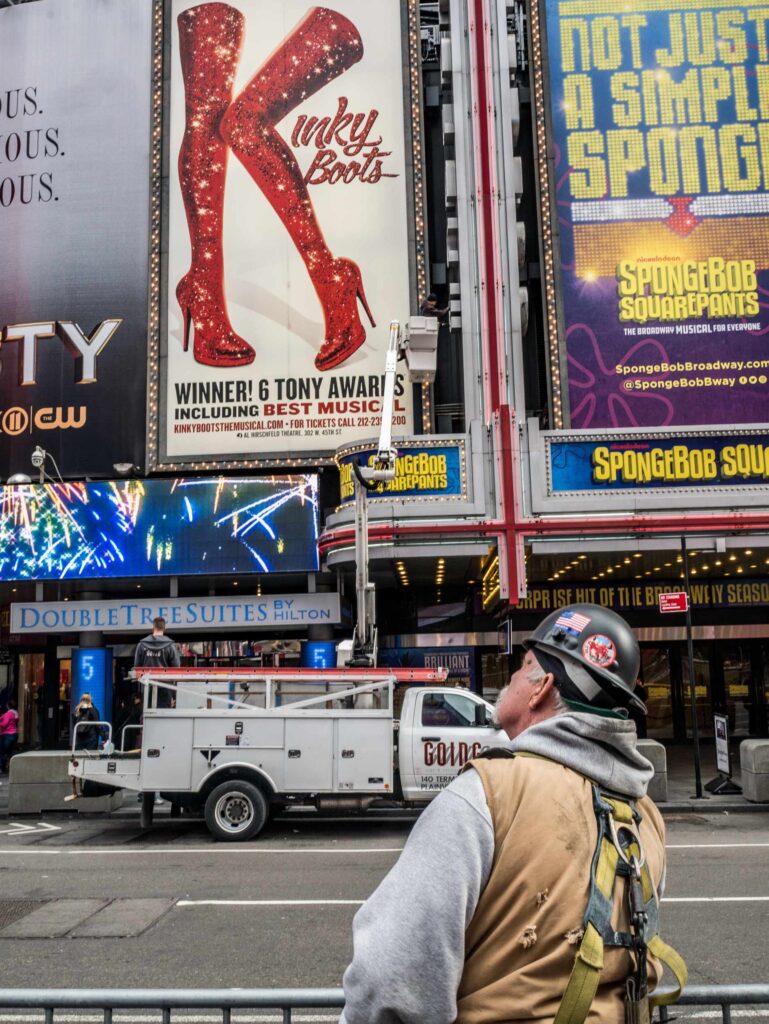
A construction worker standing in the middle of New York’s Times Square contemplates the possibilities of a giant billboard advertising the Tony Award-winning musical, Kinky Boots. What is more amusing than this is the fact that the Billboard resides directly besides another giant billboard and theater advertising the family-oriented SpongeBob SquarePants musical production. This side-by-side reality seems to symbolize more relaxed and tolerant attitudes towards sexuality in the urban environment. At the same time, it hints ever so faintly to me of Times Square’s seedier past.
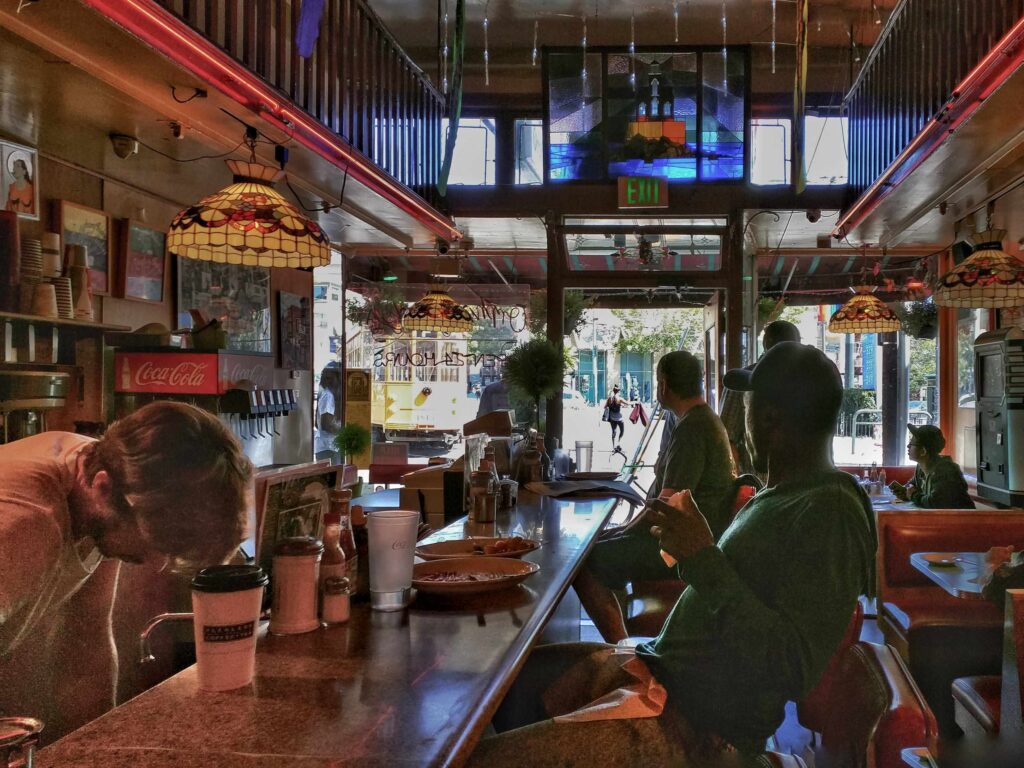
Every time I see this photograph, the song “There She Goes” by the English rock band the La’s arises in my mind for some reason. The photograph shows a number of male customers at a diner collectively gazing out the door as a young woman in tight clothes and laden with shopping bags crosses the street in the distance….or does it?
Once upon a time, I sat down for brunch at the popular San Francisco diner, Orphan Andy’s, in the city’s Castro District. After a while, I noticed the other customers having their meals at the diner counter and wanted to capture that classic scene. However, when I raised the camera to my eye take a photograph down the counter, the customers noticed and looked out the diner door, thinking I was trying to take a photo of something or someone interesting in the distance, resulting in this photography. The fact that I was able to imagine and cast an entirely alternative narrative is a humorous but cautionary tale of the fact that while the medium of street photography draws from the world around us, it does not always reflect actual reality.

Going down an escalator into London’s Tube, I photographed this young couple before me. What caught my eye was their interlocking arms, its sharp right angle somehow similarly reflected in the rows of rectangular ads all along the sides of the descending escalator. On later closer inspection, I realized the contents of the advertisements themselves – “Shakespeare Trilogy”, “Bodyguard”, “The Last Tango”, “Skin Care”, “I Love Mormon” – seem to allude to ideas of tragedy, security, romance, beauty, faith, and the many other complex challenges and motivations inherent in love, perhaps even in this couple’s love journey symbolized by the escalator ride.

As much profound reverence and value as human beings place in the concept of love, humanity sadly often defines and experiences love merely within a severely limited and self-centered fashion. What is a more encompassing definition of “love”?
I believe all human beings have the innate capacity for universal and unconditional love of others. Yet because of our discriminatory mind (discriminatory in the judging and clinging sense) and a lifetime of conditioning, our capacity for love remains limited. We show affection and concern for those who are important to us while ignoring the suffering and care of other living beings around us, leading to the condition where great suffering coexists besides small joy. If we can slowly condition ourselves to loosen the grip of our discriminatory habits (desirable/undesirable, good/bad, of worth/useless, clean/unclean, mine/yours, etc.), and to begin the gradual process of loving and caring for others unconditionally, we can begin to shift our reality towards great happiness and small suffering. Your suffering becomes my suffering. My joy and well being becomes yours. Until, perhaps someday, there is no yours and mine, no loved and unloved. Then we will have realized the true potential of our existence as profound humane beings within the vast cosmos.
